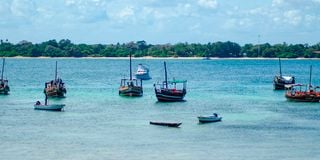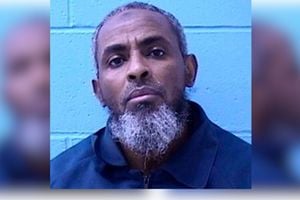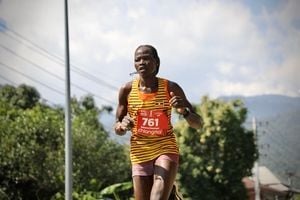Scholars initiate grounds for Coast slave trade victims to demand compensation

According to historical records, the 17th century slavery in the Coast region turned into slave trade in the 18th century.
What you need to know:
- According to historical records, the 17th century slavery in the Coast region turned into slave trade in the 18th century
- The inhumane acts mostly by traders from Arabic and Western nationals, left many unhealed hearts, hatred among nations, separated families and unanswered questions by the victims
- The team, which is drawn from the National Museum of Kenya, Pwani University and Chechin University in Poland documented the history of slave trade in Eastern Africa on the Indian Ocean
The historical slave trade that took place in the past in Kenya’s Coast region may return to haunt perpetrators as scholars initiate grounds for victims to demand compensation.
According to historical records, the 17th century slavery in the Coast region turned into slave trade in the 18th century.
The inhumane acts mostly by traders from Arabic and Western nationals, left many unhealed hearts, hatred among nations, separated families and unanswered questions by the victims.
However, contrary to calls for compensation by communities who underwent other forms of historical injustices in the past centuries including the Mau Mau freedom fighters, it is uncommon to hear such calls from victims of slave trade in the country.
A team of scholars and researchers embarked on a mission to document afresh the slave trade that took place in the region with an aim of building a case for victims to demand compensation from Arabic and Western nations which were involved.
The team, which is drawn from the National Museum of Kenya, Pwani University and Chechin University in Poland documented the history of slave trade in Eastern Africa on the Indian Ocean.
According to the National Museum of Kenya Coast Regional Assistant Director Athman Hussein, the research on the slave trade started two years ago.
He said Kibokoni, Mstanganyiko, and Mnarani on the Kilifi Creek, Takaungu, and Rabai in Kilifi were identified as largely affected by the slave trade apart from Shimoni in Kwale County.
“The research proved that there is enough evidence for slavery and slave trade in Kenya,” he added.
Mr Ibrahim Busolo, a History and Theology lecturer at Pwani University, said the journey to document slavery and the slave trade in Kenya had several challenges, including the lack of willingness by people to speak about the topic.
The team had challenges to gather information from the victims and perpetrators of slavery and the slave trade.
“Many Kenyans are not ready to discuss slavery and slave trade because it is unfortunate that people used to buy and sell others to be exploited in other countries and many lost their relatives, while with others, their great grandfathers were perpetrators,” he said.
Additionally, the generation that was born out of slavery or the slave trade was not willing to talk and identify themselves as victims.
Mr Busolo said communities focused on freedom from colonialism and did not focus much on addressing the injustices that resulted from slave trade.
“Colonialism came after the slave trade and people focused on fighting for their freedom leaving the issue of slave trade which was forgotten,” he said.
Mr Busolo said the researchers had to buy materials, including photos and drawings from foreign libraries in the United Kingdom and America, an indication that foreign institutions are benefiting.
“All the photos and other materials have a copyright and you cannot get them unless you pay, meaning that somebody somewhere is using the photos and drawings to make money while the victims are not aware,” he added.
He said that the experience was a challenge to the country to start fresh documentation through oral information for our Kenyan libraries for the community to understand what is at stake.
Former Mnarani Ruins curator William Tsaka said there are records to prove that Arabic nationals subjected the African community in Eastern Africa to plantation slavery in farms.
Mr Tsaka narrated that the Western and Arabic nationals started the slave trade in the 18th Century for cheap labour from the Africans.
"The Arabs and Whites had discovered cheap labour, and Africans were used to pull the boats and ships, and this was the beginning of the slave trade. As time went by, there was a huge demand for slaves from Africa to work abroad in sugarcane farms and companies.
“The demand led to a boom in the slave trade and the perpetrators who were Africans benefitted a lot from the business. About 400 slaves would be loaded on a ship and ferried abroad,” he added.
According to Mr Tsaka, many families have demanded to know who sold their kin and siblings to the foreigners to no avail.
“In the Coast region, the wounds left by the slave traders are still fresh and bitter among the affected families. Some have even questioned their support and gifts to Kenya, and even perceived that it was a way of apologising for their wrong deeds through the slave trade,” he said.
Mr Tsaka said, unlike the Mau Mau freedom fighters who came together and demanded compensation from the British Government after a long time and got sensitised on the way to go, it was only in West Africa that the slaves formed an association to fight for justice.
Charo Chengo, 52, from Kibokoni, said that he grew up knowing that their relatives were victims of the slave trade.
Mr Charo said they bordered Mkenge village and that they would ask their grandfather the meaning of the word.
"Our grandfather told us that Mkenge means to lie in Giriama and we could ask him if people from that village were liars or lied about something but he told us that the Arabs used dates to lure the villagers and were later captured for trade," he said.
He added that Kibokoni found its name because the villagers who resisted boarding the ships were whipped hard by the perpetrators.





